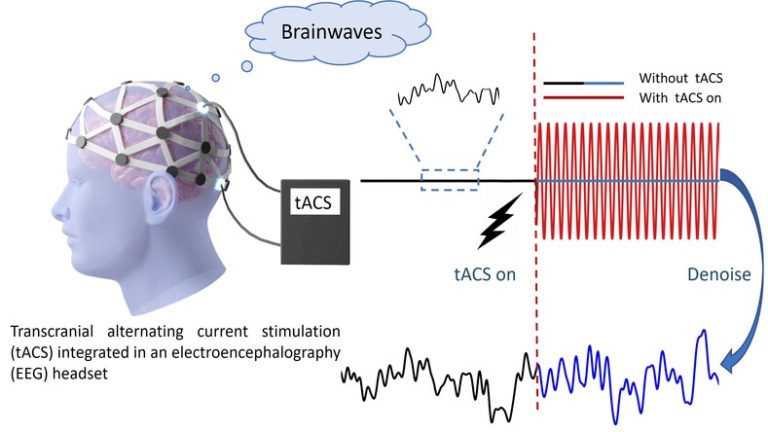Transcranial alternating current stimulation (tACS) is a non-invasive technology for modulating brain activity, with great potential for improving motor and cognitive functions. However, the large-amplitude artifacts induced by tACS on simultaneously recorded electroencephalographic (EEG) signals have posed a major challenge for investigating tACS effects on the brain and realizing its full potential. Thus, the objective of this study was to develop a method for improved denoising of tACS-EEG signals.
To do so, we combined blind source separation (BSS) and the empirical wavelet transform (EWT). Specifically, we tested 4 BSS algorithms: principal component analysis (PCA), canonical correlation analysis (CCA), multiset CCA (MCCA) as well as independent vector analysis (IVA). We examined the performance of these BSS methods both applied individually and combined with EWT. We also used a scalp impedance model to assess the performance with a known ground truth with more realistic tACS noise. A hierarchical clustering scheme was incorporated to achieve the automatic removal of artifacts. Performance was evaluated in terms of denoising both realistic simulated and experimental tACS-EEG data.
EWT combined with BSS yielded considerably improved performance compared to BSS alone for both the simulated and experimental data. Overall, IVA combined with EWT yielded the best performance. The proposed noise reduction method yielded very promising results for quantifying the effects of tACS on simultaneously recorded EEG signals. Therefore, our methodology can contribute to a better understanding of the ongoing effects of tACS on brain activity and the underlying mechanisms. It can also help extract reliable biomarkers that can be integrated into closed loop tACS neurofeedback approaches aiming to improve brain function by modulating the underlying neural activity in clinical populations such as stroke and Parkinson’s patients.

